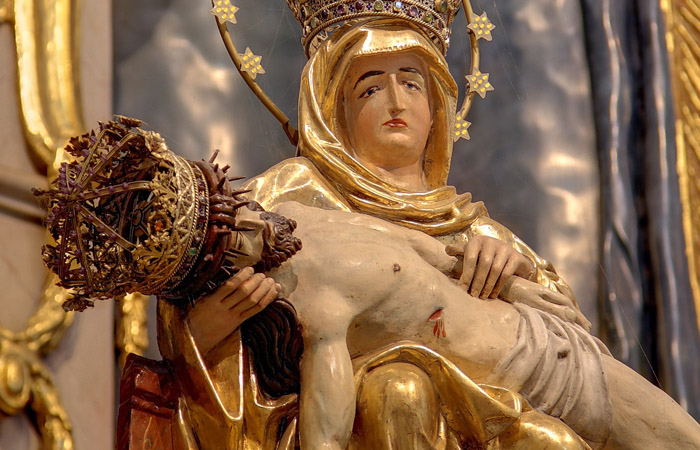MEMORIAL
The commemoration of Mary’s sorrows starts in the Middle Ages, in the context of growing Marian devotions. Pope Benedict XIII established the Feast of Seven Sorrows of the Virgin Mary in 1721 for the entire Church. First, it used to be celebrated on the Friday before Palm Sunday.
At the same time, the Service Order used to celebrate a similar feast on the third Sunday in September. At the beginning of the 19th century, Pius VII extended it to the whole Church and in 1913 Pius X moved it to the last day of the octave of the birth of the Blessed Virgin Mary, which was September 15.
The result was that the Church celebrated two similar feasts, one before Palm Sunday and one on September 15. Finally, the reformed liturgical calendar retains only one of them, which is September 15.
The seven sorrows of Mary refer to seven moments in her life, where she experienced a particular pain and suffering
- Presentation of Jesus in the Temple (Luke 2:34-35)
- The flight to Egypt (Matt 2:13-15)
- Jesus gets lost in Jerusalem at the age of 12 (Luke 2:41-52)
- The meeting of Mary and Jesus on the way to Calvary
- The crucifixion of Jesus
- Jesus’s body is taken down from the cross
- The burial of Jesus
In all these moments, our Lady is the preeminent example of how to live with suffering; she reminds the faithful of the malice of sin and shows the way of true repentance.
Our Lady of Sorrows is venerated as Patroness of Slovakia. Countless pilgrims gather at the National Shrine in Sastin in September and many visit year round.


